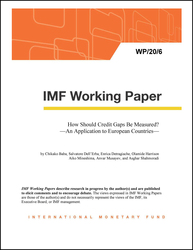
How Should Credit Gaps Be Measured? An Application to European Countries
Assessing when credit is excessive is important to understand macro-financial vulnerabilities and guide macroprudential policy. The Basel Credit Gap (BCG) – the deviation of the credit-to-GDP ratio from its long-term trend estimated with a one-sided Hodrick-Prescott (HP) filter—is the indicator preferred by the Basel Committee because of its good performance as an early warning of banking crises. However, for a number of European countries this indicator implausibly suggests that credit should go back to its level at the peak of the boom after the credit cycle turns, resulting in large negative gaps that might delay the activation of macroprudential policies. We explore two different approaches—a multivariate filter based on economic theory and a fundamentals-based panel regression. Each approach has pros and cons, but they both provide a useful complement to the BCG in assessing macro-financial vulnerabilities in Europe.
Publication date: January 2020
ISBN: 9781513525877
$18.00
Add to Cart by clicking price of the language and format you'd like to purchase
Available Languages and Formats
| English |
Prices in red indicate formats that are not yet available but are forthcoming.
Topics covered in this book
This title contains information about the following subjects.
Click on a subject if you would like to see other titles with the same subjects.
Credit Cycle , Credit Gap , Countercyclical Capital Buffer , Macroprudential Policies , WP , BCG , real interest rate , output gap , fundamental variable
Summary
Copyright © 2010 - 2025
Powered by:
AIDC



